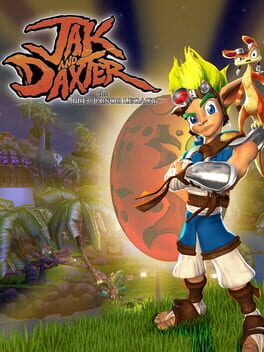The only thing I knew about Jak and Daxter going in was that it was developed by Naughty Dog, a team who has become famous for their story-focused games, so I was expecting it to be the narrative practice that turned the Crash Bandicoot team into the people who would make The Last of Us. As it turns out, the grim atmosphere and violence I was picturing when I thought of Jak and Daxter started with the second game, and this one is exclusively a lighthearted fantasy platformer. It shocked me just how simple this game is, following the most basic template of 3D platforming. Your goal is to collect power cells, which are scattered around the world or earned by completing simple objectives. You need to get a certain amount before progressing to the next set of levels, where you’re presented with a new number to get, and your search starts over again. If this sounds like Mario 64, it’s because that’s what it is in everything but name. You don’t collect power stars, you collect power cells. You don’t collect 100 coins for a star, you collect 90 orbs for a cell. You don’t collect 8 red coins, you collect 7 scout flies. You don’t need 70 power macguffins to beat the game, you need 72. The quest hubs are also the default set (grassland/desert/ocean/jungle/ice/fire/boss) with only a couple exceptions. This all sounds pretty dismissive, so I want to emphasize that Jak and Daxter isn’t a bad 3D platformer, it’s simply an unambitious one. If you played this game without the context of Naughty Dog’s legacy and how the series went on to greater ambitions, you would probably dismiss it as a run of the mill attempt to capitalize on the genre’s popularity. Having no load times between zones may have been enough to differentiate it back in 2001, but there isn’t enough to make it stand out today.
